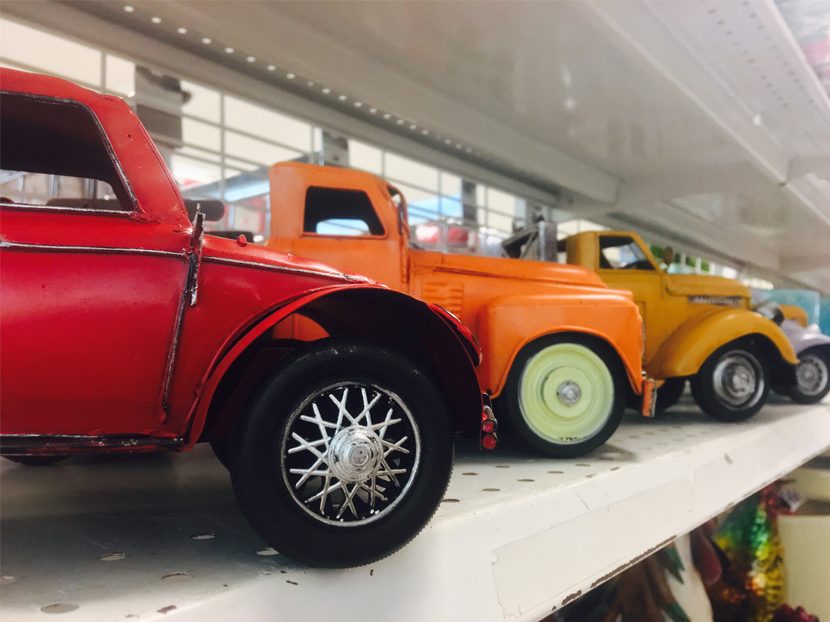Toys, Tools and Trucks
I hope parents still encourage their kids to explore working with their hands.

I have started to purge my collection of “stuff” in an attempt to downsize as we will eventually move to a smaller home and shop. I’ve heard tell that stuff accumulates in direct proportion to the space you have or make available — like molecules imposed in a vacuum. So, the more storage and barn space you have access to, the more you gather and hoard.
It seems regardless of where I travel, somewhere in a town will be a storage facility — usually multiple facilities. They offer small spaces to large outdoor RV storage, generally. It makes you wonder how much money is spent on storing stuff we may never again use or see. Patrick Sissions, senior editor at Curbed, had some data on my question:
“One in every 11 Americans pays around 92 bucks a month on storage space,” he says. “Approximately 50,000 storage facilities equate to a 2.3-billion-dollar industry, seeing a 7.7 percent growth since 2012. In 2017, an additional 4 billion was spent developing new facilities.”
A rep I travel with from time to time has a storage unit for all his product samples and literature. He accesses his unit from an inside hallway, and it’s safe, clean and dry. It is shelved and well lighted, very organized. The onsite manager accepts UPS and mail and places it in the rep’s unit for an additional fee. If you had a large territory to cover, you could have units in multiple locations. One nice side benefit is he now has room in his garage for vehicles instead of “work” items.
Memories
My family has always been fortunate to have shop space at every location we lived over the years. As a result, I have a lot of stuff, including good stuff that belonged to my grandfather. He was a mechanic and owned a Nash dealership back in the day. So I have kept some of his old tools. A large, heavy mechanic’s vice has traveled the country with me and has resided in at least six different homes and shops. I also have an Atlas lathe my dad bought while serving in World War II.
My mother kept many of my toys, as well as my dad’s. I still have the heavy-duty steel Buddy L toys from my childhood, some inherited from my dad. Every time I come across one stored in various places around our home and shop, it brings back fond memories. I realize now these toys shaped the person I am now and the career path I ended up on.
The toy trucks are my earliest toy memory, followed by erector sets and pedal tractors. My dad rigged up a snow plow and tire chains for my pedal tractor to clear the sidewalks when we lived in the “snow capital of the U.S.” — the Buffalo, New York, area.
Somewhere around age 9, I realized the potential of small internal combustion technology. An assortment of homemade minibikes and go-karts helped me realize that fossil fuel could fuel speed and thrills. Minibikes evolved to motorcycles over the years. Being around a lot of lakes, the next transition, once I had a driver’s license, was a boat.
A boat opened a lot more doors to explore the world. With Dad’s help, several neighbors and I built 8-foot-long hydroplanes with just a few sheets of plywood and dimensional pine boards. Mercury Hurricane outboards skimmed us along just about every body of water within a 200-mile radius of home.
Once I was out of high school, my parents allowed me to own my first vehicle. I saved up over the years I was learning the plumbing-and-heating trade with my dad. I bought a brand-new Jeep Cj-5 with a V-6 engine. That small canvas-topped vehicle took me from coast to coast, from sea to mountaintop.
When I started my first business, work evolved to where we kept a skid steer and backhoe busy. My background and upbringing around all things mechanical allowed me to service and modify most any tool or equipment we ever owned to provide a living and lifestyle.
The art of wrenching was really what was instilled in me with all these home- and factory-built projects and vehicles. The experiences have left me with a lifetime of income and stories to tell. I suppose that engine discovery burns on with most “motorheads” as few, if any, of us outlive the thrill of motor vehicles and equipment. The toys get larger and more expensive to keep the thrill factor alive.
Work with your hands
I hope that today’s generations do not lose sight of opportunities like this. I hope parents still encourage their kids to explore working with their hands. I see such a large percentage of youngsters constantly glued to the screen of a phone or tablet, often rarely looking up to acknowledge their surroundings.
Certainly, we are not going back to horse-and-buggy days, nor should we. Still, parents of youngsters can expose their kids to fun projects, involving tools and wood and metal and electricity. We can turn high schoolers on to the honorable world of manual labor — “dirty jobs,” in some cases. There’s productive work to be done and fun to be had. Society needs men and women who can build and fix things. We do not live in a SimCity world, at least not yet.
I am encouraged as I travel the United States and Canada to see the tech schools that are still going strong. While the number of schools has seemed to drop, the students in the schools I visited over the years are on- board. They realize the world of opportunity, virtually anywhere on the planet, for their skills and knowledge.
I challenge you, before the day is over, to you put a cool old toy or tool in the hands of someone much younger than you.





